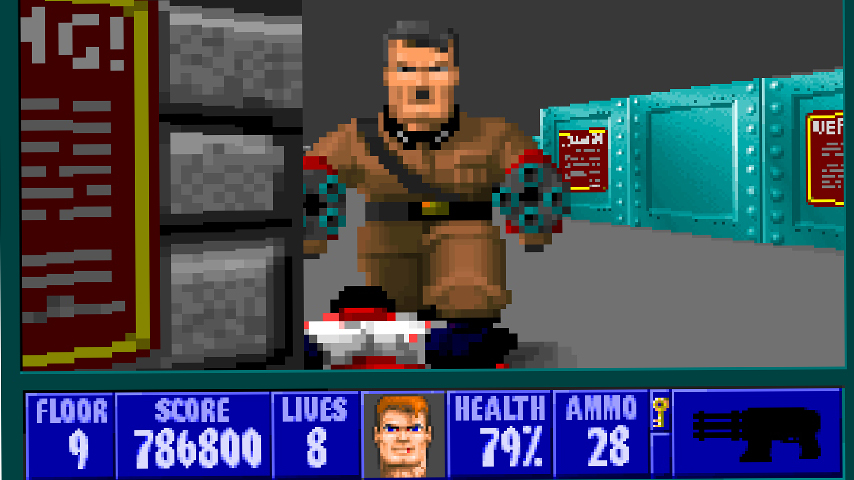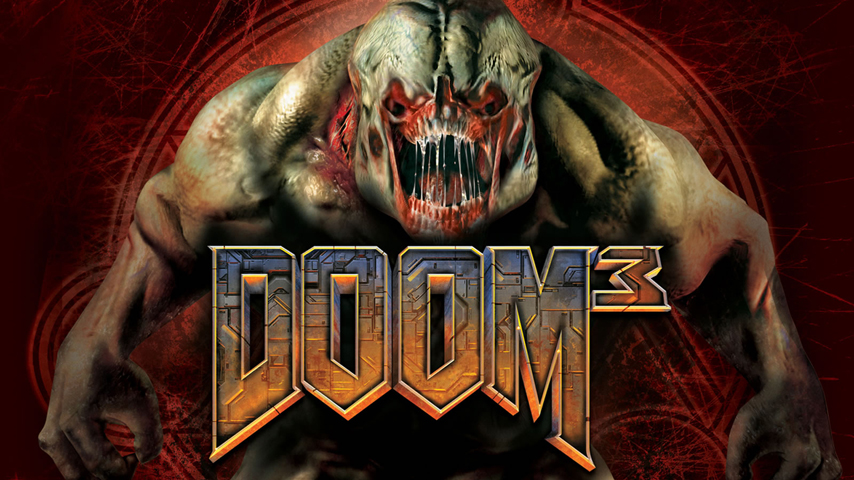Wolfenstein, Doom, Quake and Rage. With three of the biggest shooter properties in gaming (and also another one), id Software has clearly housed some of the industry’s brightest stars. Where is this talent now?

“id Software invented and reinvented the first person shooter, turning it into the hulking mega-genre it is today.”
No joke: id Software was once the most recognisable developer in gaming. It’s first three shooter properties – Wolfenstein, Doom and Quake – invented and reinvented the first person shooter, turning it into the hulking mega-genre it is today. Doom is one of the most notorious games in our history. The open source id Tech engines dominated gaming before Epic and Unreal stole the show. The influence of id Software is everywhere.
As such, you might expect id to be an eternal, untouchable pillar of the industry, but this isn’t so. Throughout its history it has bled talent and founders like nobody’s business. There are all sorts of theories as to why this might have happened, but if you put them all together and then squint a bit the magic eye picture that appears is of an independent company struggling to stay true to the visions of not one but a myriad of talented creatives in a very tough industry. (And also headhunting by other companies keen to get a bit of that talent for themselves).
As with any situation involving human beings and their differing perspectives, the truth is hard to pin down. Even widely read and accepted accounts like David Kushner’s excellent Masters of Doom, which drew on hundreds of interviews, inspire disagreements and controversies. We’ll never know why id Software saw the turnover of its entire founding and chief creative staff, but we do know that it happened.
So where are they now?

Tom Hall – founded id Software 1991, left 1993
One of the least recognised of the four founding members of id Software (poor old fifth musketeer Jay Wilbur never gets a look-in), Tom Hall’s story has been swamped by John Romero’s thanks to their frequent collaborations.
“Anachronox has not attracted the praise such an original and personality-filled game deserves, although its cult following is testament to its appeal.”
Hall was the first of the big four to leave id, having spent just two years with the company, departing before the release of the seminal Doom. Legend has it Hall fell out with other key id members over the amount of gore and violence in Doom, which took a much darker tone than Wolfenstein. Interestingly, Hall’s next stop was Apogee, later known as 3D Realms, where he designed Rise of the Triad – quite a violent game in its own right, although nowhere near as controversial as Doom was. He also contributed to Terminal Velocity, a couple of Duke Nukem games and Prey before moving on to Ion Storm with Romero, a repeat collaborator.
Hall’s Ion Storm history is rather more lustrous than Romero’s, as his personal design project was Anachronox. Hugely overshadowed by stablemate Deus Ex, and perhaps tarred with Daikatana’s brush after four years in development, Anachronox has not attracted the praise such an original and personality-filled game deserves, although its cult following is testament to its appeal. This classic of PC RPGs is still waiting for a sequel, with both fans and staff members keen to get on board if the rights and funding ever come together.
Hall left the faltering Ion Storm almost immediately after Anachronox’s release, sticking with Romero to found a short-lived mobile studio and take a role at Midway Games. He spent some time with family friendly developer KingIsle, then returned to Romero’s side to join social developer LootDrop. Sadly, Hall’s legacy has not proved as compelling to modern gamers as other big-game 1990′s stars, as his two attempts to crowdfund a project – Shaker and Worlds of Wander – failed. He now works for casual publisher PlayFirst.
Here’s an interesting bit of Hall trivia: he created the Dopefish, one of those delightful little pieces of gaming arcana, and has done voice work for a variety of games.

John Romero – founded id Software 1991, left 1996
For a time, John Romero was the most notorious of id alumni. At a time when id Software was the brightest light in development, its key designers were being touted as household names among gamers. One of four original founding members of id, Romero was gone by 1996 to found Ion Storm. He spent just five years with the company he helped create and will forever be cited alongside.
“Critics took delight in putting the boot in to Daikatana, as they often do when a game is marketed with such hubris.”
What happened next is a piece of gaming history. Romero threw himself into the ambitious Daikatana, the shooter to end all shooters. Whoever came up with the idea of using Romero’s name in marketing materials was on the right track but the famous “John Romero’s About To Make You His Bitch… Suck it down” advertisements hit precisely the wrong note.
Although Daikatana was repeatedly delayed, with development stretching right through to 2000, Ion Storm and publisher Eidos elected not to update its ageing tech, and the resulting game was mediocre at best. Critics took delight in putting the boot in, as they often do when a game is marketed with such hubris, and the contrast between pre-release expectations and reality was a crushing blow Ion Storm might not have survived if not for Warren Spector’s wonderful Deus Ex releasing in the same year.
Romero left Ion Storm in 2001 with his fellow co-founder, resulting in the immediate closure of the Dallas Studio. The Austin team followed in 2005. After founding a since defunct mobile studio and short stints at Midway and Gazillion, he founded social game developer Loot Drop in 2010 in collaboration with Brenda Brathwaite-that-was – an industry legend in her own right who promptly married him, taking his surname. The two now do a lot of work in education and advocacy. Romero’s most notable lead design role of recent years seems to be Facebook game Ravenwood Fair.

Sandy Petersen – joined id Software 1993, left 1997
“Petersen churned out 19 levels for Doom despite his late arrival, later contributing levels to both Doom 2 and Quake, and drawing on his horror fantasy roots for monster design in both franchises.”
Coming to game development by the roundabout but not uncommon route of fantasy literature and pen-and-paper roleplaying, Sandy Petersen was a member of the legendary MicroProse before his interest in Wolfenstein 3D lured him into id Software’s clutches shortly before the release of Doom.
Apparently finding no conflict between the controversially demonic Doom and his devout Mormon faith, Petersen churned out 19 levels for Doom despite his late arrival, later contributing levels to both Doom 2 and Quake, and drawing on his horror fantasy roots for monster design in both franchises.
Perhaps because his name is lesser known outside of hardcore fans, Petersen is one of the few key id alumni whose departure didn’t spark rumours and speculation. He took himself off to Ensemble Studios in 1997, burying himself in Age of Empires and continuing to explore his outside interests in film, literature and board game and pen-and-paper roleplaying design.
Although he apparently still serves as creative director at jobbing studio Barking Lizards, Petersen founded Green Eye Games and seems to have come back to his roots with Cthulhu Wars, a crowdfunded board (and later video) game that drew over $1.4 million in pledges.

American McGee – joined id Software 1993, left 1998
It was EA’s idea to use American McGee’s highly memorable name to market his first post-id game, so the publisher is who we should thank for McGee’s fame. Prior to leaving id, where he spent five years climbing rapidly from tech support to designer, McGee wasn’t anywhere near as well known as some of his colleagues.
It’s not totally clear why McGee left id, actually, except the impetus seems to have come from above rather than from the designer himself. Despite acknowledging McGee’s contributions to Doom 2, Quake and Quake 2, id “let go” of McGee for not delivering what it was after.
“In those heady days when any association with id was a potential goldmine, EA birthed American McGee’s Alice, a dark take on the Lewis Carroll stories that slotted right in with late 1990′s goth cool.”
Luckily, he wasn’t unemployed for long. In those heady days when any association with id was a potential goldmine, EA birthed American McGee’s Alice, a dark take on the Lewis Carroll stories that slotted right in with late 1990′s goth cool, and nowadays the designer’s association with fairy tales and fables has been cemented by the cult success of this classic.
Several unrelated projects marketed under McGee’s name followed but none has ever come anywhere near the success of Alice, although a sequel – Alice: Madness Returns – achieved growing acceptance among fans a few years on from a disappointing launch.
McGee now heads up independent studio Spicy Horse in Shanghai, which has a number of cross-platform multiplayer projects on the bubble in addition to a crowdfunded cinematic re-examination of the Alice mythos. Spicy Horse’s games almost always seem to tap into major trends and put an interesting twist on them, not to mention a trademark splash of imaginative aesthetics, but for whatever reason, none of them have found major success in the west. Yet.
Next: The exodus of the 1990′s is over, but the slow leeching away of familiar faces is not.

















